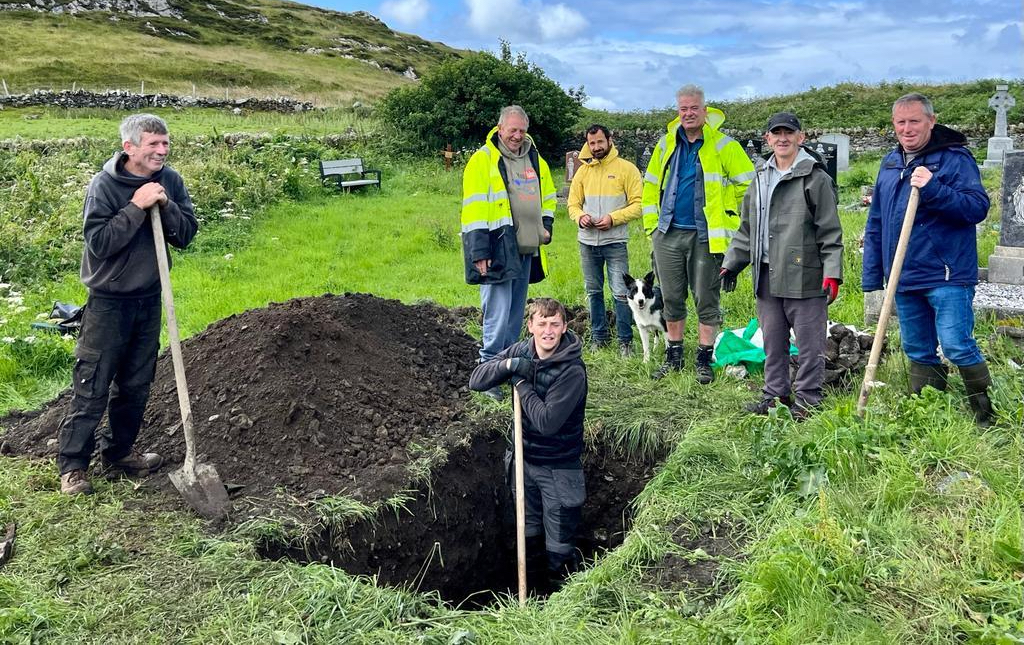
Archaeological excavation at St Colman’s Monastery on Inishbofin in preparation for the return and burial of ancestral remains stolen in 1890 and held in the Anatomy Dept TCD since 1892 (photo: Marie Coyne)
The opening of a grave in a community burial ground marks the end of a ten-year campaign seeking the return and burial of the ‘stolen skulls’ of Inishbofin. Community representatives will remove the remains of their ancestors from the ‘Old‘ Anatomy Dept at Trinity College, University of Dublin at 11am on Wednesday 12 July and, following a funeral service at noon in the college chapel, will begin the journey home. The burial will take place at 1pm on Sunday 16 July. See www.inishbofin.com for details.


Christopher Day (top) making the coffin in the same way that his great grand uncle James Cunnane (bottom) made coffins in Inishbofin in the 1960’s (photos: Marie Coyne).
This is the first repatriation project of its kind in Ireland and is probably the most important anthropological event since the Harvard Anthropological Mission to the Irish Free State in the 1930s. To begin with, the story of the ‘stolen skulls of Inishbofin’ captured the public imagination in the wake of a resurgent Black Lives Matter Movement and generated extensive media interest in the history of anthropology in Ireland. Furthermore, the controversy triggered a critical engagement with the idea of anthropology at a community level and this will have a major impact on how institutions deal with communities in relation to colonial legacies. For instance, the Colonial Legacies Review Working Group at TCD contested the use of ‘repatriation’ to denote ‘return and burial’ because, ironically, of its unwelcome colonial connotations in an Irish context. The debate that followed clarified important aspects of the legislation governing the retention of human remains, not least (a) the distinction between archaeological and ethnological collections from the colonial era and (b) the automatic right of return for burial in the case of the latter. The controversy also raised serious questions about the ‘evidence based’ methodology employed by the Colonial Legacies Review Working Group, which ultimately had to concede the unconditional right of communities in Inishbofin, Aran Islands and St Finian’s Bay to have ancestral remains returned for burial.
The Inishbofin remains will be buried as close as possible to St Colman’s Monastery, where they rested until Haddon and Dixon stole them in 1890. The site was chosen because of the low risk of disturbing earlier, unmarked burials – the source of the remains – or any settlement associated with the monastery. Nevertheless, archaeologist Franc Miles from Archaeology and Built Heritage supervised the opening of the grave by Ryan Lash, John Burke, John Cunnane, John Michael Coyne, Ryan Coyne and Máirtín Lavelle.
Marie Coyne documented the process in the following slideshow.

